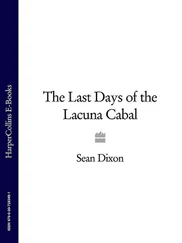Catherine had certainly lost patience with Freemasonry by the time of her visit to the old capital. Unable to distinguish between philanthropic Rosicrucians devoted to the inner life and the revolutionary mysticism of the ‘illuminati’ and Saint Martin, she was excluded from the movement by her sex and suspicious of it as a Prussian-dominated espionage network with the potential to ensnare her son. (Though it seems doubtful that Paul ever belonged to a Masonic lodge, it emerged in 1792 that Bazhenov himself had delivered a parcel of mystical and devotional literature to the grand duke on behalf of the publisher Nikolay Novikov.) 31Having been nauseated by the visit to St Petersburg in 1779 of Count Cagliostro—the Sicilian charlatan Giuseppe Balsamo, who was a pseudo-alchemist rather than a Freemason—Catherine condemned Freemasonry to Grimm as ‘one of the greatest extravagances ever in fashion among the human species’. 32Cagliostro was resurrected in the guise of Kalifalkzherston, a character who embezzles gold from gullible victims in Catherine’s play The Deceiver , one of three anti-Masonic dramas dating from 1785–6 that she claimed proved a ‘prodigious success’ with her audience. 33
Governor General Bruce had been expressing anxiety about unregulated publishing for more than a year by December 1785, when the empress ordered him to investigate some of the books published by Novikov’s Moscow university press so that she could be sure that they contained no Masonic ‘ravings’. In March 1786, warning Bezborodko that he faced ‘complete ruin’ from the sequestration of his stock, Novikov implored Catherine’s secretary to intervene on his behalf. Shortly afterwards, she banned only six Masonic texts, including the Rosicrucian New Chrysomander and the Chemical Psalter , a pseudo-Paracelsus. Sent to test the publisher’s faith, the sympathetic Archbishop Platon could find no contradiction between his Freemasonry and his Christian beliefs. Nevertheless, the empress’s suspicions continued to be fuelled by her confessor, Father Ioann Pamfilov, in cahoots with one of Platon’s most influential enemies, Archpriest Peter Alekseyev of the Archangel Cathedral in Moscow. Although no further systematic censorship was imposed, Bruce and these clerics led her to worry that her 1783 edict permitting private publishers had generated not only the sorts of ‘useful’ book she was keen to propagate, but also a lot of dangerous and potentially subversive nonsense. Though she was pleased to learn that Dr Zimmerman admired her final anti-Masonic drama, The Shaman of Siberia , ‘because I like that play very much’, she feared that it was likely to ‘correct no one: absurdities are tenacious and these particular absurdities have become fashionable. The majority of German princes think it good form to bow their heads to all these illusionists’. 34
While Novikov’s books were impounded, Catherine continued her own voracious reading. Necker’s Compte rendu reminded her that Louis XVI’s finances were ‘in general, completely disgusting’. 35The long-awaited arrival of Diderot’s library and manuscripts in the autumn of 1785 unnerved her more. Nothing had prepared her for the shock of finding his critical ‘Observations’ on her Nakaz , which remained unpublished in his lifetime. Directing his treatise as much against Montesquieu as against the empress, Diderot had been able to see ‘only a formal difference’ between despotism and pure monarchy: ‘It is the spirit of pure monarchy which has dictated the Instruction of Catherine II. Pure monarchy remains as it is or reverts to despotism, according to the character of the monarch. It is therefore a bad sort of government.’ His verdict on serfdom was equally uncompromising: ‘There is only one way to avoid the abuses of serfdom and prevent its dangers: and that is to abolish serfdom and rule only over free men.’ 36‘This essay,’ the empress retorted, ‘is utter drizzle in which one finds neither an understanding of things, nor prudence, nor foresight.’ Observing that ‘criticism is easy, but art is difficult’, she insisted to Grimm that her Nakaz had been ‘not only good, but even excellent, and well adapted to circumstances’ because ‘everyone benefits from the principles established by this Instruction’. 37
* * *
The benefits of Quarenghi’s Hermitage theatre were destined to be enjoyed by a much narrower circle. When the space above the stables in the courtyard of the Small Hermitage proved too small for the purpose, it was decided to build on the river on the site of Peter the Great’s Winter Palace. ‘I shall not need the theatre this winter,’ Catherine commented in response to the plans the architect sent her in 1784. ‘Therefore you may quietly proceed with the drying and painting, since it won’t be used until the winter of 1785, that is, you have a full 14–15 months ahead of you.’ 38
Meanwhile, Quarenghi had plenty of other projects to occupy his time. He had written without exaggeration in 1783 that he had ‘so much work’ that he scarcely had ‘time to eat and sleep’. Two years later, he sent another Italian correspondent a staggering list of commissions which were soon to transform not only the urban landscape in St Petersburg, but also many provincial towns and estates:
…three pavilions in the new garden at Peterhof…; the Stock Market; a large building for the State bank; a very large two-storey block of shops for the fair in Irkutsk; a church with a hospital attached for their imperial highnesses at Pavlovsk; a building…to accommodate the copies of Raphael’s loggias;…a façade for the colleges and church in Polotsk; the façade for the governor’s residence in Smolensk; a palace and stables for General Zavadovsky in Ukraine; the Hermitage theatre…on the model of the ancients; the façade of the new imperial palace in Moscow…; a marble gallery for the palace of Her Imperial Majesty, which I have begun and which I must bring to order and re-do, and which, when finished, may be considered the richest gallery in the whole of the North; the façade of the College of Foreign Affairs; shops for silversmiths…;…. five churches;…a large group of buildings and a stock-exchange for the fair at Kursk; a house belonging to the late General Lanskoy in the town of St Sophia; a building for public shops, the press and professors’ apartments at the Academy of Sciences; a manege, stables, a great staircase and many internal decorations at the late General Lanskoy’s palace [at Velë in Polotsk province]; and equally the reconstruction of the whole of this aforementioned palace and three large gates in marble and bronze for the big square; two iron and bronze bridges for her imperial majesty’s garden at Tsarskoye Selo; the renovation and enlargement of the governor’s residence at Voronezh, and also the archbishop’s palace, the seminary and its bell-tower, houses for the choristers, the provincial administration, and many other renovations and façades for a lot of public buildings in the town; a pavilion with a large hall for music, two rooms and an open temple, dedicated to the goddess Ceres, with a ruin nearby in the ancient style in the aforementioned garden. All these buildings are part complete, part in the process of being finished. 39
Amidst this flurry of activity, Quarenghi pressed ahead with his theatre, modelled on the Palladian theatre at Vicenza, itself inspired by classical Rome. It opened on schedule on 22 November 1785 with a performance of Ablesimov’s ever-popular comic opera Miller-Sorcerer, Cheat and Matchmaker at which Cobenzl was the guest of honour. 40Some months later, the architect proclaimed that he had tried to give his semicircular auditorium ‘an ancient appearance, while making it simultaneously correspond to contemporary requirements…All the seats are equivalent, and each may sit wherever he judges best’. 41It was here amidst the pink marble columns that a select audience celebrated the empress’s fifty-seventh birthday in 1786 with the first two performances of Fevei , an opera for which she herself had written the libretto. 42As the French émigré Prince Esterhazy later observed, Vasily Pashkevich’s music was entirely based on ‘ancient local chants’:
Читать дальше












